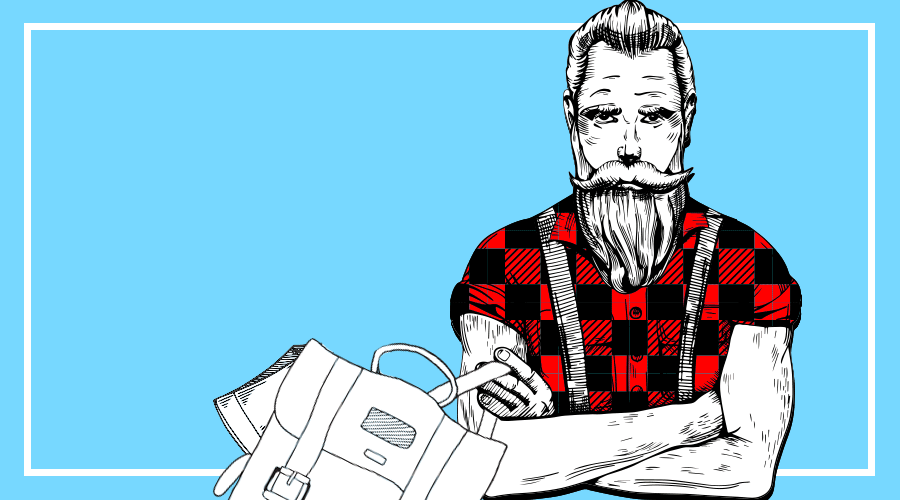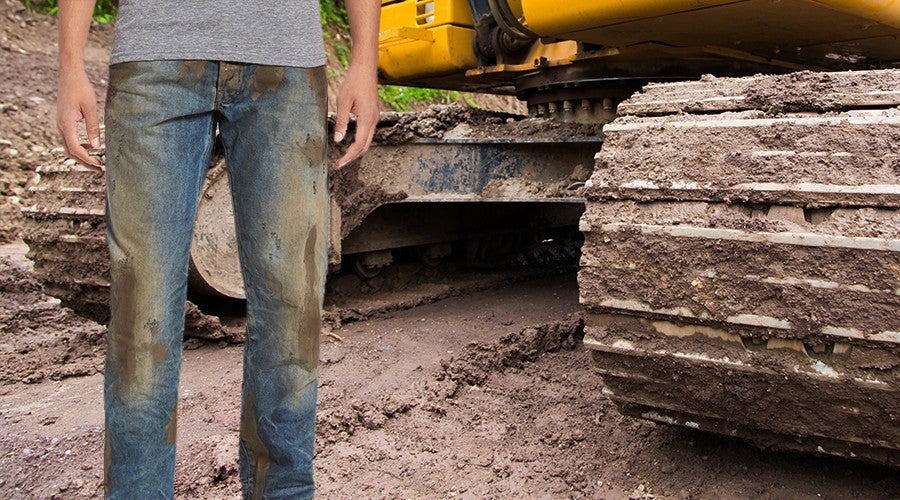You work as a graphic designer in a hip office in the arts district, but you prefer to look as if you spend your spare time digging muddy trenches. Lucky for you, you can solve this sartorial conundrum with a $425 pair of jeans that come coated in fake, caked-on mud, signaling to everyone that you’re a real man who uses his body to do hard man things that get you very sweaty and dirty.
The jeans, sold at Nordstrom, are called the Barracuda Straight Leg, and are pitched as “heavily distressed medium-blue denim jeans in a comfortable straight-leg fit embody rugged, Americana workwear that’s seen some hard-working action with a crackled, caked-on muddy coating that shows you’re not afraid to get down and dirty.”
They caught the eye of Fox & Friends’ Brian Kilmeade, who said if you’re going to wear the muddy jeans you should “earn the mud.” They also stoked the wrath of working-class representative Mike Rowe of Dirty Jobs, who called the abomination “further proof that our country’s war on work continues to rage in all corners of polite society,” fostering “the illusion of work. The illusion of effort.” They “aren’t pants,” he writes. “They’re not even fashion. They’re a costume for wealthy people who see work as ironic — not iconic.”
He’s not wrong about the costume part, but it’s not as if this is the first time men’s fashion has co-opted the uniform of the working man at an outrageous markup. Take raw denim. The jeans, which routinely sell for $300 and use stiff raw denim fabric (not pre-washed or pre-distressed in the factory), are almost as precious a piece of clothing as you can get: They’re sewn on vintage, postwar shuttle looms that create a closed edge on the fabric (self-edge or selvedge). They’re meant to be broken in by the wearer via their everyday life and to be seldom washed. Detailed guides for how to create a unique wear pattern without chipping away the precious indigo are mainstays of men’s fashion magazines such as GQ and Esquire.
They’re also a straight rip-off of the original Levi, designed by Levi Strauss, who sought a working man’s solution for 19th century coal miners in San Francisco that was stiff and sturdy enough to endure a backbreaking day of real labor without shredding the fabric.
Or take the lumbersexual, a flannelled and bearded hipsterized city dweller who “is bar-hopping, but he looks like he could fell from a Norway Pine,” Tom Puzak at Gear Junkie wrote of the phenomenon in 2014, coining the term. “His backpack carries a MacBook Air, but looks like it should carry a lumberjack’s axe.” The look involves rugged jeans, rugged, unkempt facial hair, and usually, RedWing work boots, just like ironworkers wore! The boots also sell for hundreds of dollars, far out of reach of the average modern construction worker who could actually use a pair.

As Puzak mocks:
He looks like a hardened outdoorsman but his flannel feels soft to the touch. He will open your beer with an omni-present Buck knife. He is a master of the retro Instagram filter. His flannel is coated with a waterproof DWR coating. His laid back style has been honed with more effort than he would like you to know.
Make no mistake: There’s a lot to ridicule here. Looking like you can chop wood when you can, at best, chop some onions, is a tad farcical for a gender whose entire identity is ordered around authentic toughness, endurance and resourcefulness. I once had a boyfriend who subscribed to this notion: He insisted on smoking Marlboro Reds, shooting guns and mixing the stiffest of cocktails, because, high on the fetishization of tough, hard-drinking literary greats, he believed that this is, after all, what real men do. (Couldn’t change a flat tire, though.)
But can we really blame men for hanging on to the look when they’ve long since lost the map? “There’s a paradigm shift occurring in our country regarding what it means to be masculine, and many men have had difficulty adjusting to that transition,” psychologist James O’Neil told the American Psychological Association in a piece about the sweeping societal changes that have threatened cherished notions of dudeness — globalization, declining manufacturing jobs and women gaining increasing power in the workplace, to name a few, all set to the same steady drumbeat that real men are still supposed to be tough, dominant and self-reliant.
Fake muddy jeans, then, though hideous (as is the matching fake muddy denim jacket), taken with their cousins raw denim and lumbersexual aesthetics, are less a war on work as Rowe put it, but more a striking visual symbol of the anxiety men feel about telegraphing old-school masculinity—even when they aren’t sure what that lived experience looks like anymore.
In my opinion, that’s a contradiction we should probably try to understand more than mock; men, stuck between old ideals and modern progress, are now, in many ways, just playing the part of the men they grew up idealizing, down to the (fake) muddy jeans.
Rowe should know this better than anyone: He isn’t actually a dirty laborer, but rather an actor and celebrity with a college degree paid handsomely to play one on television.

